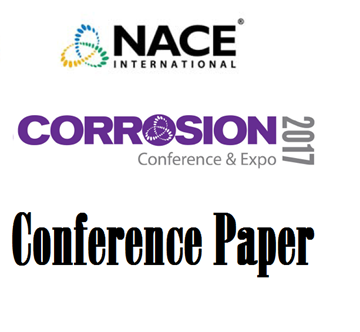Search
Products tagged with 'sulfide stress cracking'
View as
Sort by
Display
per page
Effect of Ni on Sulfide Stress Cracking and Stress Grooving in Carbon Steel - Part 1: Constant-load (Dead-weight) Test
Product Number:
51324-20715-SG
Publication Date:
2024
$40.00
Effect of Ni on Sulfide Stress Cracking and Stress Grooving in Carbon Steel - Part 2: Four Point Bend Test
Product Number:
51324-20709-SG
Publication Date:
2024
$40.00
Effect of Plastic Strain on Hydrogen Absorption of Low Alloy Carbon Steel for Linepipe
Product Number:
51323-19139-SG
Publication Date:
2023
$20.00
Effect of Side Groove Geometry on Crack Propagation Behavior and K1SSC in DCB Test
Product Number:
51321-16341-SG
Publication Date:
2021
$20.00
Effect of Surface Hardness Distribution on SSC Propagation Behavior in Grade X65 Linepipe
Product Number:
51323-19238-SG
Publication Date:
2023
$20.00
Environmentally-Assisted Cracking (SSC And SCC) Of Martensitic Stainless Steel OCTG Material In Sour Environment In 5%Nacl And 20%Nacl Solution
Product Number:
51322-17563-SG
Publication Date:
2022
$20.00
Evaluation Of Titanium 475 Alloy For Use In Oil And Gas Environments
Product Number:
51322-17840-SG
Publication Date:
2022
$20.00
From Pits To Cracks: A Review Of 45-Years Of Published Research On Surface Trenches In Low Alloy Steels Exposed To H2S-Containing Environments
Product Number:
51322-17957-SG
Publication Date:
2022
$20.00
Investigation of Sulfide Stress Crack Propagation Using Sour Pipe Burst in Tubulars with Simulated Defects under Pressure
Product Number:
51324-20420-SG
Publication Date:
2024
$40.00
Modeling and Experimental Insights of Sulfide Stress Cracking Corrosion Mechanism
Product Number:
51317--9328-SG
ISBN:
9328 2017 CP
Publication Date:
2017
$20.00
MR0175-1993, Sulfide Stress Cracking Resistant Metallic Materials for Oilfield Equipment
Product Number:
53024-HD1993
ISBN:
MR0175-93
Publication Date:
1993
$179.00
NACE TM0177-2005, Laboratory Testing of Metals for Resistance to Sulfide Stress Cracking and Stress Corrosion Cracking in H2S Environments
Product Number:
NACE TM0177-2005
Publication Date:
2005
$179.00












